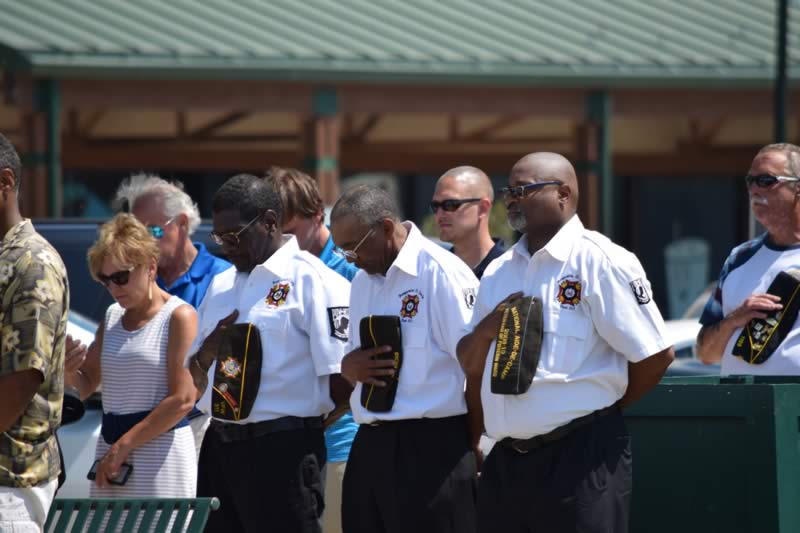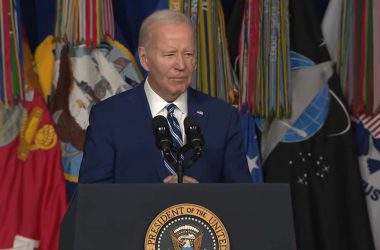Washington, DC—(ENEWSPF)—February 5, 2013.
(FACILITATOR): The assistant secretary on public intergovernmental affairs. Secretary Shinseki and Secretary Panetta have just concluded another joint meeting, their ninth such meeting of the last 18 months. Their close working relationship is a testament to their shared commitment to taking on the common issues that affect our departments.
At this point, I’d like to welcome Secretary Shinseki and Secretary Panetta.
SECRETARY ERIC SHINSEKI: Good afternoon, everybody. Am I on, Tom?
(FACILITATOR): You’re up.
SECRETARY SHINSEKI: Well, good afternoon, afternoon. I’m personally very proud to have this opportunity to be able to thank my friend, Secretary Leon Panetta, for his many years of devoted public service, dedicated specifically to taking care of the men and women who wear on nation’s uniforms and for those who in years past have worn those same uniforms.
We just concluded our ninth meeting, I believe, in 18 months. As always, you come out of these meetings great things accomplished, but more work to do, and that will always be true. But with the president’s leadership and guidance, we have brought our two departments much closer together, closer than ever before. And that’s good for our people.
We had previously indicated our commitment of both of our departments to a single, common, joint integrated electronic health record, the IEHR. And today we affirm again our commitment to achieving the president’s goal in 2014.
Today’s meeting was about how to get there and, in the short term, we’ve agreed to improve data interoperability to that integrated electronic health record before the end of this year, by standardizing health care data no later than December 2013, creating health data authoritative source no later than September of 2013, accelerating the exchange of real-time data between V.A. and DOD no later than December of 2013, and allowing V.A. and DOD patients to download their medical records, what we call our Blue Button Initiative, no later than May of 2013, and, finally, upgrading the graphical user interface, this thing we call the GUI, to display the new standardized V.A. and DOD health care data no later than December of 2013, all of this focused on an initial operating capability in 2014.
We’ve also approved plans to expand the use of the Janus graphical user interface, the GUI, to seven additional sites and its expansion of two DOD sites no later than July 2013. And then, finally, we’ll select a core of — core set of IEHR capabilities no later than March of 2013. All of these milestones enable achievement of the president’s goal in 2014.
Secretary Panetta and I have been working side by side for 18 months now to ensure servicemembers and veterans receive the care they’ve earned. And I just want to extend my thanks once again to the secretary for his leadership and his partnership, and as I’ve said several times before, even in testimony, the veterans couldn’t have a stronger ally in their corner than Leon Panetta.
So with that, Mr. Secretary?
SECRETARY OF DEFENSE LEON E. PANETTA: Thank you very much. Thanks, Ric, and good afternoon to everybody.
It is, as always, a great pleasure to be back here at the Department of Veterans Affairs and to have a chance to discuss the new steps our departments are taking to integrate electronic health records on an accelerated basis. Upfront, let me take this opportunity to deeply thank you, Ric, for your cooperation, for your friendship, and for your great willingness to work with us during the time that I’ve been secretary of defense. Ric is an outstanding leader. He served his country with distinction. And it’s been my great pleasure to have the opportunity to continue to work with him in this job.
We’ve met on a regular basis. We’ve had a number of meetings. And, you know, some of them have been pretty tough meetings. But we are grateful that progress is being made towards a common goal of trying to support those in uniform and their families. There’s no distinction here between veterans and those who serve in uniform. We’re talking about the same individuals who serve this country. And that’s what we’ve tried to do with the Department of Defense and the Department of Veterans Affairs, is to recognize that we both serve the same individuals who put their lives on the line for this country.
Achieving the goal has taken a tremendous amount of collaboration at all levels. But I’m proud to say that our departments are now working together more closely than ever before. We recognize that bringing together two large bureaucracies, trying to make those bureaucracies work together to form a seamless support system for all service members and veterans is not an easy challenge. It’s tough. But we also know how important it is to cut through the regulations and the red tape and deliver quality services for our troops, for our veterans and to their families. Ric and I have always said that this cannot be about turf, this cannot be about turf, this has to be about what’s best in serving our veterans.
One of the most complex challenges we face is, obviously, the whole issue of health records. Our service members often have extensive records. The last thing they need is to worry about their doctors having all of the information that they need in order to provide them the care that they deserve. That’s the last thing they ought to worry about.
It’s frustrating. It’s been inefficient for service members to have to hand-deliver records from one system to another when they get out of the military. It doesn’t make a hell of a lot of sense. As President Obama directed in 2009, we can and we must do better. And that means improving the quality and availability and interoperability of our health record systems.
As you know, our two departments have been moving toward a plan to build a single customized, integrated electronic health record system from the ground up, to meet the president’s directive and modernize our legacy IT systems. Our goal had been to complete this effort by 2017. I think over the last few months, Ric and I both have recognized that, you know, our worry is, how long is it going to take to get to that goal? And what is going to be the price tag to get to that goal? And how many times is it going to be delayed?
So we asked the managers of the joint program to take a step back, take a step back and assess whether we could achieve the president’s directive much sooner and for much less money than had been budgeted. With advantages in technology, thank God, and the work that our two agencies have already done, it turned out that we could.
So today, Ric and I agreed to make a series of important changes to simplify this program, cut costs, and to get our veterans the key benefits of this new system much sooner. Rather than building a single integrated system from scratch, we will focus our immediate efforts on integrating V.A. and DOD health data as quickly as possible, by focusing on interoperability and using existing solutions.
This approach is affordable, it’s achievable, and if we refocus our efforts, we believe we can achieve the key goal of a seamless system for health records between V.A. and DOD on a greatly accelerated schedule. We’re now directing our departments to do just that.
We’ve already identified ways to standardize V.A. health data and align it with DOD data. It’s not an easy task, but it’s making good progress, and it’s been done by both agencies. And we are continuing enhancements, as Ric pointed out, on the so-called Blue Button effort that will allow doctors and patients to access health records at any DOD or V.A. facility.
By this summer, DOD and V.A. will field and begin conducting a pilot program on the common interface for doctors at seven joint rehab centers across the country and we’ll also expand its use at two other sites. All of these facilities will be interoperable by the end of July 2013, so fast time track, but we think we can get it done.
By January of 2014, we will meet the president’s directive for standardizing and aligning data in a way that enables both V.A. and DOD beneficiaries to download their own health information. The bottom line is this, that we now have a clear and achievable path to meet the president’s directive to implement the seamless electronic health record system for our troops and for our veterans.
Coming out of a decade of war, we owe it to the service members and veterans to do everything we can to help them succeed in life after the military. That includes helping them prepare for the transition at the Department of Defense and giving them the information and support that they need when they come home or leave the military.
This is a struggle. This is a struggle that has gone on for a long number of years. Some have argued that we should build a perfect system. Some argued that we’ll never be able to do this. But for the first time, both DOD and V.A. have come together to say we can get this done, we can get it done in an effective way that does the job and does it in an expeditious way in order to make sure that we best serve our veterans and we best serve those who put their lives on the line. I’m proud to be able to make this announcement today, because I believe that both departments has met the challenge that the president has given us to try to do everything possible to try to put the health care systems of both these departments together for the benefit of our troops. Thank you.
Source: defense.gov








